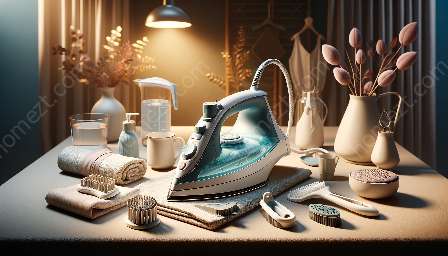Ironing is an essential part of maintaining a polished and professional appearance for many types of clothing and fabrics. With the right techniques and tools, you can achieve wrinkle-free and well-pressed results. In this guide, we'll delve into the world of ironing techniques for different fabrics, with a focus on how steam irons and home appliances can be used to achieve the best results.
Understanding Different Fabrics
Before we dive into specific ironing techniques, it's important to have a basic understanding of different fabrics and their specific needs. Each fabric has its own unique properties and care requirements that will influence how it should be ironed.
Cotton
Cotton is a durable, versatile, and easy-to-care-for fabric. It is one of the most commonly used fabrics for clothing and household items. When ironing cotton, it's best to use a high heat setting on your steam iron. Be sure to iron cotton when it is slightly damp, as this will make the process easier and more effective. Use a spray bottle to lightly mist the fabric before ironing, and work in small sections to ensure thorough coverage. Always iron dark colors on the reverse side to avoid shine or damage to the fabric.
Silk
Silk is a delicate and lustrous fabric that requires gentle handling. When ironing silk, it's important to use a low heat setting to avoid damaging the fibers. You can use a pressing cloth to protect the fabric from direct contact with the iron. Avoid using steam when ironing silk, as it can leave water spots or cause the fabric to become misshapen. It's also advisable to iron silk on the reverse side to prevent any potential damage to the fabric's surface.
Wool
Wool is a warm and luxurious fabric that requires special care when ironing. Use a low to medium heat setting on your steam iron and always iron wool garments when they are slightly damp. You can use a pressing cloth to protect the fabric and avoid direct contact with the iron. Be sure to avoid applying too much pressure and use gentle, gliding movements to prevent flattening the natural texture of the wool.
Denim
Denim is a sturdy and rugged fabric that can withstand higher heat settings when ironing. Use the highest heat setting on your steam iron and work in sections to effectively remove any wrinkles. It's best to iron denim when it is slightly damp, as this will make the process easier and more efficient. Be sure to iron both sides of the fabric to achieve a smooth and well-pressed result.
Using Steam Irons for Different Fabrics
Steam irons are versatile tools that can be highly effective for a wide range of fabrics. They utilize steam to soften and relax the fibers, making it easier to remove wrinkles and creases. When using a steam iron, it's important to follow these general guidelines for different fabrics:
- Cotton: Use a high heat setting and apply steam to thoroughly remove wrinkles.
- Silk: Use a low heat setting and avoid using steam to prevent damage to the delicate fibers.
- Wool: Use a low to medium heat setting and apply steam sparingly to avoid over-wetting the fabric.
- Denim: Use a high heat setting and apply steam to effectively remove wrinkles from the sturdy fabric.
By understanding the specific needs of each fabric and how steam irons can be used to achieve optimal results, you can master the art of ironing for different fabrics. With practice and the right techniques, you can ensure that your clothing and fabrics always look their best.
Conclusion
Ironing techniques for different fabrics can greatly impact the overall appearance and longevity of your clothing and household items. By mastering the art of ironing with steam irons and home appliances, you can achieve professional-quality results and maintain the pristine condition of your fabrics. With the knowledge and guidelines provided in this guide, you can confidently tackle ironing tasks for a variety of fabrics and enjoy the satisfaction of well-pressed and wrinkle-free results.


























